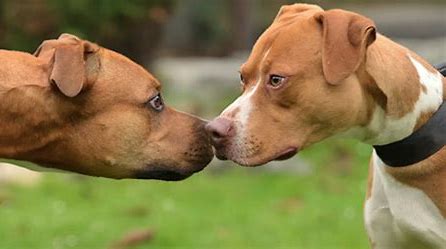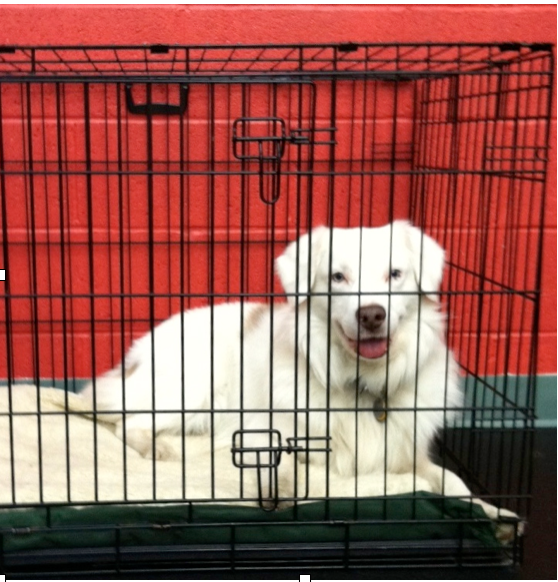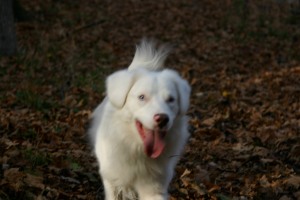
House training is an important step to living successfully with a dog. More than likely, it was the first thing you thought about when you planned to bring home your new puppy. It may also have been the thing that worried you the most. The good news is that housebreaking can be very easy if you follow some consistent guidelines.
It is important to remember that puppies do not house-train themselves, and using the house as their toilet is not something that they will “outgrow.” Training is a must and it will require a commitment from you and lots of patience. It is your job to make things easy so that your puppy can learn and succeed!
Mistake-free Learning
By far, the simplest way to house-train a puppy is to use mistake-free learning, meaning that you never let him make a mistake (i.e., using the house as a toilet). Diligently supervise your puppy and watch for any indication that a potty incident is imminent and then quickly get him outside. If you can’t watch him, then you must crate him, even if it’s just for a minute. Remember, this isn’t punishment, it’s education.
You can further prevent house training accidents by making sure that your puppy is frequently taken outside. Your young puppy will need to go out every time he comes out of the crate, every time he awakes from a nap, every 10 – 15 minutes during playtime, approximately 20 minutes after eating or drinking and additionally, every hour on the hour. That is a lot of “outside” time, but the more opportunities your puppy has to go outside, the more opportunities you have to build good habits!
Feed your puppy on a regular schedule; don’t leave food out all day. Keep a journal of when he eats/drinks and when he makes potty. This will help you to predict
when he’ll have to go. HINT: Young puppies eliminate very frequently! The number of times that they need to eliminate will decrease as they get older.
Don’t wait for your puppy to tell you that an outside trip is necessary. Just like young children, puppies won’t always be accurate about when they need to go, especially if they have been distracted. Instead, put your puppy on a frequent outside schedule so he won’t have to ask and you won’t have to guess.
In addition to supervising and preventing mistakes, there are three fundamental things that your puppy must learn for potty training to be successful:
1. where to go;
2. how to “hold it”; and most importantly, 3. where not to go.
It is as easy as 1, 2, 3!
1. Teaching Where to Go
When you take your puppy out, bring them to the spot where you want them to go. Stay there and be patient; some puppies have no idea why you have them out there. Walk back and forth to “move things along.” When they finally do go, praise them and reinforce that good behavior with a treat immediately! You can then go for a walk. The walk should be a reward AFTER the puppy has done what you need them to do. This way, you ensure that when you take your puppy out the first order of business will always be to potty. This is a great time-saver for the future!
If the puppy doesn’t go, take him back in the house, put him back in his crate and wait five minutes before trying again. Don’t fall into the trap of thinking that he probably didn’t have to go. If he hasn’t gone and you give him unsupervised playtime inside, you are sure to be cleaning up an accident in the near future.
2. Teaching Where Not to Go
Just as puppies need to learn where to go, they also need to learn what places are off limits. Just as he is about to make a mistake, make a sound loud enough to startle him but not scare him, like eh-eh or clapping your hands and quickly take him outside. Once he goes outside, make a fuss praising him and be sure to reward him!
If you are supervising your puppy properly, then catching him in the act shouldn’t be a problem. If you didn’t see it happen, then you need to assess your supervision plan. Don’t try to correct the puppy when you discover the accident; after- the-fact reprimands only make your pup confused. Correcting too late can result in the puppy hiding any accidents or eating them to prevent getting scolded.
Whether you are house training a puppy or an older dog who just joined your family, the rules are the same. Your puppy or dog cannot have the run of the house until he has had no accidents for several months. Period. Use baby gates and crates to help confine him to where you can keep your eyes on him. If you haven’t been doing this already, the good news is that it isn’t too late! START RIGHT NOW!!!
3. Teaching Holding It
The last step you will teach is how to hold it. Gradually, as your puppy has been successful with house training, you can begin decreasing the frequency of your trips outside. Instead of taking them out every hour on the hour, try an hour and 15 minutes and then an hour and a half. While you are increasing the interval, make sure to supervise your puppy a little more closely or crate them during the increased time slot.
As a rule of thumb, for long-term crate confinement purposes puppies can “hold it” one hour for every month they are old, plus one. For example, a three-month-old puppy can be in a crate for a maximum of four hours. Remember, that is a rule of thumb, not carved in stone! Also, those numbers are for when the puppies are confined and are most likely sleeping. They cannot hold it that long when they are awake and active. Some puppies, especially the smaller breeds, won’t be able to physically hold it that long. Young puppies often cannot hold it all night, so set your alarm!





